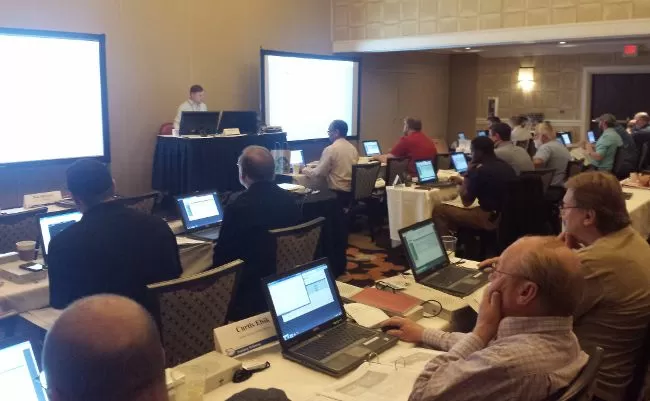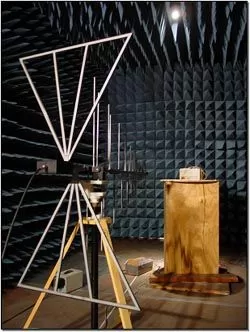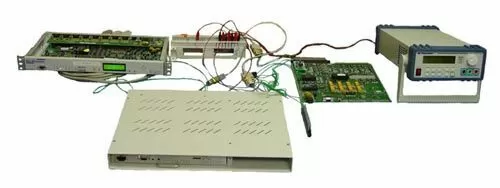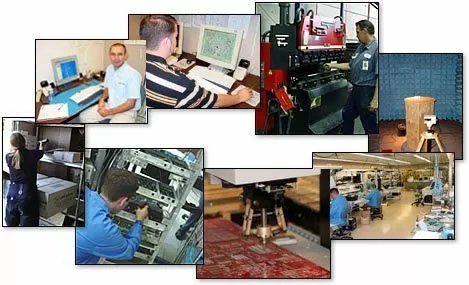Check out our White Paper Series!
A complete library of helpful advice and survival guides for every aspect of system monitoring and control.
1-800-693-0351
Have a specific question? Ask our team of expert engineers and get a specific answer!
Sign up for the next DPS Factory Training!

Whether you're new to our equipment or you've used it for years, DPS factory training is the best way to get more from your monitoring.
Reserve Your Seat TodaySetting your network up for remote monitoring can seem like a very expensive task. However, what some people forget is that it's an investment. It might not affect your revenue directly, but your monitoring system will ultimately protect revenue and reduce costs for years to come.
It's understandable to think about buying the cheapest monitoring option available - sometimes it's hard to get a budget for this kind of project. Don't forget, though, that the cheapest solution available may end up costing a lot more than the equipment you thought was "way too expensive".
In this article, we'll take a look at the most common hidden costs when you purchase cheap monitoring gear and what red flags you should look for in a vendor in order to avoid them.
One of the most important things to keep in mind before selecting and purchasing your monitoring equipment is that it shouldn't become too expensive to operate on a year-to-year basis. You'll probably also spend a lot of money just to get it installed, but don't forget that the impact of licensing can be even more dramatic than the initial purchase (very sneaky).
There are two types of licensing that can be an issue for your budget:
Charges annually per each instance of a device
Be careful with this kind of licensing. As your network grows, these costs don't grow just once, but every year. You'll be paying for each device you want to monitor, each and every year forever. The manufacturer might also raise licensing fees in the future, leaving you in quite a trick situation.
Paying annually for each device type you want to monitor
The counts aren't usually so bad on these, but the prices associated with each device type can be huge.
In order to avoid this headache, you need to find a way to control and get a predictable solution. Make sure that your vendor works with a one-time technology licensing. Normally, for this licensing model, when you purchase a technology module for one type of equipment/protocol - such as ASCII, SNMP, or Modbus - there are no additional charges for monitoring added devices of that type. You'll be able to freely add devices (up to the physical & software capacity of your gear). Read the fine print: ensure that when you buy a module, you get to use that module forever for an unlimited number of devices.
Imagine that you bought the monitoring device with the best price that you could find. Perfect. But now that you're ready to get it up and running, you face a common problem: you don't know to operate it. Your device isn't as intuitive and user-friendly as you thought, and your vendor isn't as helpful now after the sale. The result? You're left on your own when it comes to your monitoring deployment.
If you need to get your remote deployment right the first time (and who doesn't need to do that?), then you should look for a vendor that will provide you with the assistance you need. Many vendors actually will help you through the deployment process, and will teach you how to efficiently use your new monitoring system.
The best companies will actually travel to your site to help you through this process, making sure your equipment is properly provisioned to enable your mission-critical monitoring.
It might be hard to find companies that do provide training - let alone for free - but it's possible. Make sure that these vendors offer a training program to help you get the best out of your gear. This training must be a hands-on course using your same equipment. With that, you'll get to learn tips and tricks to improve your visibility, while giving your unique monitoring needs the attention they deserve.

Maybe paying less to purchase your remote monitoring equipment may sound like a nice idea now, but what happens when you need tech support later?
The result is that you'll soon understand why people hate calling tech support. The current standard of this service just isn't good enough. From the companies that actually do offer this kind of service, many do so by making you pay for it. This can add up pretty quickly, especially if you're paying by the minute - while waiting on hold to talk to someone merely reading a script.
A large number of vendors in our industry think it's OK to make you wade through a voice mail system before you get to an actual human being. But then, this person doesn't understand your problem and can't help you solve it.
This process just doesn't cut it. Imagine being alone at a remote site trying to solve a problem that threatens your revenue. That's why it's so important to ask any prospected vendor if they offer free tech support, and if so, will you be talking to a live person when you call, or a cold, uncaring voice mail system?
Look for vendors that do more than just help you when problems arise. The best companies will work proactively to support you at every stage of your network monitoring: system, design, implementation and everyday use.

When it comes to the visibility of your remote sites, you need to operate your monitoring equipment using the most advanced firmware. Many vendors know that, so they make it a way to get more profit by charging for each new upgrade.
Even if you can afford to pay for firmware updates, you shouldn't have to.
A vendor worthy of your business will provide free firmware upgrades for your remotes. They should care about maximizing your monitoring network by providing you the most advanced tools. So, look for companies that provide free firmware updates to keep your gear running in peak condition, no matter how many years you keep them in use.
A protocol is just a format for encoding info, which means that the protocol is the "language" your devices will use to talk to each other.
Some vendors will offer products with support for only their own proprietary protocol. This might not seem like a big deal now, but you'll soon find out that you're trapped. Whenever you need to add more devices to your network, you'll have to buy from this same manufacturer.
To avoid this situation, make sure that your device supports the protocol mediation feature. This feature works by re-encoding your data in the format of another protocol. All of your data remains the same, but it's now formatted in a way that is intelligible to your other equipment.
How confident are you in the durability of your monitoring equipment (especially during unusual conditions)?
Simply assuming that the cheapest monitoring gear will withstand an extremely hot summer or a series of power outages will end up costing you a lot in the long run. Not only can extreme conditions force you to replace vital equipment, they can also cost you windshield time - which leads to inefficient maintenance. Also, if you work for a telecommunications company, downtime doesn't mean only the loss of important equipment and poor maintenance, it means that you'll be paying costly fines and/or losing customers.
You need to be sure that your equipment will be ready for any condition. You can't afford to replace equipment every time your remote site encounters a bit of stress, such as temperature and EMI.
While many manufacturers test their monitoring gear, the extent of the testing may be questionable. How do you really know that they test what they claim they test? Or, that the equipment you purchased actually passed the testing? Your monitoring device is supposed to give you visibility of your other vital equipment, you can't just blindly trust that the manufacturer has put in the testing necessary to keep your network online.
When purchasing your monitoring system, be sure that you are getting the best. Only buy equipment from a manufacturer that tests their products above and beyond what's necessary. It must not only function properly day-to-day, but also under the most extreme situations.
If you want to have devices with top-notch quality, look for vendors that test:
Functionality
What's the use of remote monitoring equipment if it doesn't work correctly? This test makes sure that the unit does everything it's supposed to do in the proper way.
EMI resistance
The Electromagnetic Interference testing, or simply EMI testing, searches for interference emitted by your unit and from external sources. If a device is vulnerable to EMI, it can lead to a disruption in data transfer, adverse effects on other nearby units, or even a complete failure. With this test, the manufacturer will be able to tell how much interference the unit can endure and still work as it's supposed to.

Temperature cycling
This is an important test to make sure that your equipment is durable. It cycles your unit between its most extreme low and high temperatures. Each unit should be subjected to the low and high end of its operating temperature range for at least thirty minutes. This process should be duplicated multiple times to ensure that the unit can withstand the constant change.

Power cycling
This test ensures that your device won't stop working after multiple restarts. It simulates power surges and outages as well. During this test, each unit is turned on and off for a period of approximately 12 hours to test its proper functionality.
Power cycling with extreme temperature stress
Imagine the last two tests but combined into one. This specific test is designed to put extreme stress on the devices to ensure maximum durability. The unit is subjected to either extreme heat or extreme cold and held it there for at least 12 hours, also it's continuously power-cycled during this period.

Tune-up visits are the routine maintenance for your monitoring system. Just like a vehicle, every year you want to make sure that everything is running smoothly like it's supposed to. This service can bring you many benefits in the long run, such as the increase of your gear's lifespan.
Not all vendors offer this kind of service though, simply because it can get too expensive for them. Look for manufacturers that do actually send their experienced engineers out to visit you in order to review your system's current configuration.
The best remote monitoring companies will make sure to teach your techs how to get the best use of their equipment. At the end of the visit, you'll have a system that runs great again and a staff that's more knowledgeable about the tech.
Do you have unique needs that can't be met with a prepackaged remote? Do you need various ports or numbers of alarm points at your different sites? If so, don't settle for vendors that only offer off-the-shelf products. If you do, you'll end up buying devices with more than what you ever need - or worse: with less capacity than you actually need.
Your monitoring equipment - specially your RTUs - are the front lines of your alarm visibility system. If you purchase the wrong remotes, you won't be able to know what's going on at your remote sites. If you work with a vendor that can't meet your exact requirements, you'll never have a solution that functions ideally. Buying too small means that you won't have the point capacity and functionality you need to monitor successfully. And you guessed it: buying too big means that you'll be wasting your money.
By finding a vendor with custom-design capability, you'll have equipment designed to meet your exact needs. Whether you need more analog alarm inputs, more capacity, or other non-standard features, a good manufacturer will deploy their in-house engineering to design gear to address your precise needs.
This personalized engineering process shouldn't significantly increase the cost of your monitoring equipment either. So, after all, it's possible to find a company that has the capability to provide the customization you need at the price you can afford.

Don't put the important visibility of your network in the hands of just anyone. Go with a company that makes sure to give you a perfect-fit solution - even if it means a smaller sale.
That's what DPS is. In the market for more than 30 years, we stand behind our products and solutions. We don't rely on hidden costs to trap customers or to make more profit from. We make sure to put in place all the best practices that I've talked previously about to safeguard your investment.
Call me today and find out more about how you can get the best value for your money.

Andrew Erickson
Andrew Erickson is an Application Engineer at DPS Telecom, a manufacturer of semi-custom remote alarm monitoring systems based in Fresno, California. Andrew brings more than 18 years of experience building site monitoring solutions, developing intuitive user interfaces and documentation, and opt...